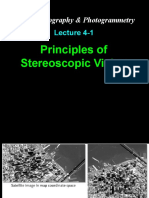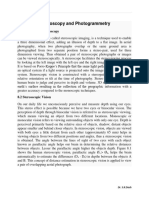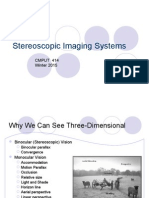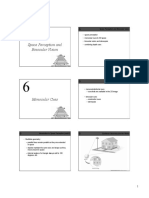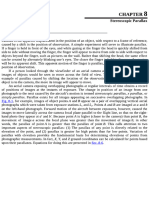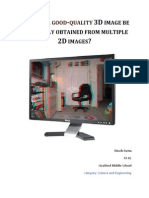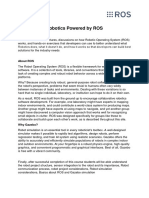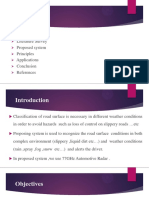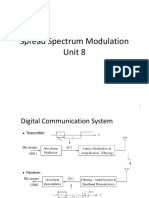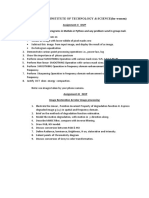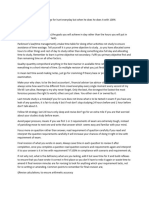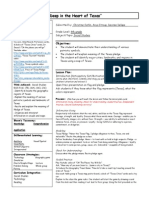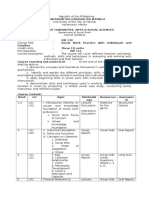0% found this document useful (0 votes)
129 views6 pagesBrief Description of Stereo-Viewing in Digital Photogrammetry
Dr. Renuka Devi discusses stereo viewing in digital photogrammetry. Stereo vision involves seeing solid 3D images using two different perspectives from the left and right eyes. This allows for depth perception. When taking stereo aerial photographs, cameras are offset to provide different angles and overlapping images. These stereo pairs can then be viewed through various methods like anaglyph glasses or shutter systems to fuse the two images into a 3D perception. Precise image orientation is required to transform photo coordinates into real-world ground coordinates and create accurate 3D models.
Uploaded by
renukaCopyright
© © All Rights Reserved
We take content rights seriously. If you suspect this is your content, claim it here.
Available Formats
Download as DOCX, PDF, TXT or read online on Scribd
0% found this document useful (0 votes)
129 views6 pagesBrief Description of Stereo-Viewing in Digital Photogrammetry
Dr. Renuka Devi discusses stereo viewing in digital photogrammetry. Stereo vision involves seeing solid 3D images using two different perspectives from the left and right eyes. This allows for depth perception. When taking stereo aerial photographs, cameras are offset to provide different angles and overlapping images. These stereo pairs can then be viewed through various methods like anaglyph glasses or shutter systems to fuse the two images into a 3D perception. Precise image orientation is required to transform photo coordinates into real-world ground coordinates and create accurate 3D models.
Uploaded by
renukaCopyright
© © All Rights Reserved
We take content rights seriously. If you suspect this is your content, claim it here.
Available Formats
Download as DOCX, PDF, TXT or read online on Scribd
/ 6






